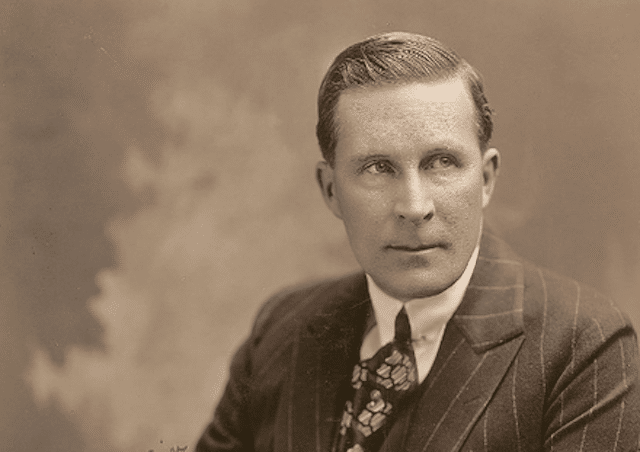The deathbed confession is a common cliché in films and television, usually featuring an emotionally charged moment where the character who’s about to push up daisies bears their heart and soul about some heinous crime they committed when they were too young to know any better to clear their conscience before finally exiting stage left; but how often does it actually happen in real life?
Judging from our research, the answer is: surprisingly often!
Though sometimes that confession isn’t followed immediately by the confessor’s death, sometimes the process can take months, or might not happen at all—leading to some criminals and murderers getting their just desserts.
Here are 10 crimes that were solved by deathbed confessions.
10. The Weepy Voiced Killer
Minnesota police in the 1980s were on the hunt for a serial killer who targeted young women from the Twin Cities. The killer had a habit of making anonymous calls, where he would taunt police in a high-pitched voice, earning him the moniker “the Weepy Voiced Killer.”
The killer’s modus operandi was to injure or kill these young women before calling the police, alerting them to the crimes that had taken place. The killer would usually lure them into a car, offering them a ride before taking them to a secluded location and killing them in a variety of different ways. One victim, Kimberly Compton, was stabbed 61 times with an icepick. Another, Karen Potack, was bludgeoned with a tire-iron. Murder weapons also ranged wildly from screwdrivers, blunt objects (like tire-irons), and ice picks.
The case would go unsolved, until Paul Michael Stephani, a devout Catholic, confessed to the murders after being diagnosed with terminal cancer.
9. A Confession of a Contract Killer

The confession in 2018 of a terminally ill elderly New Zealand resident (known only a Shaun) sparked an ongoing ethical debate as to whether doctors are bound by client-patient confidentiality when it comes to serious crimes, even those taking place more than 50 years prior to the confession.
Shaun confessed to having fallen in with the wrong crowd shortly after leaving school. He became a contract killer, often looking into the eyes of his victims, and watching them struggle and plead for their lives before pulling the trigger.
“Shaun” claimed that he had lived with the guilt all his life and tried his best to make up for it by donating to charities, volunteering for good causes, and taking in what he described as “lost souls.” None of that helped ease his guilt.
His doctors urged Shaun to write a letter and send it to the police before he passed, but so far, his doctors are the only ones who know the details of his crimes, but thanks to a victim advocacy group who learned of the confession and the hospital’s decision to withhold that information, police are finally closing in on the truth.
8. Murderer Confesses on Deathbed and Lives to Regret It

Not every deathbed confession results in the murderer actually dying, sometimes the confessor recovers. And that is exactly what happened to James Washington. While serving an unrelated 15-year prison sentence for attempted murder, Mr. Washington suffered a heart attack and admitted to murdering Joyce Goodener in 1995.
Unfortunately for Washington, he would recover from his heart attack and although he tried to recant his confession later, he would end up being convicted of murder and sentenced to life in prison.
When Goodener’s body was originally found, her nose appeared to have been flattened by some form of blunt object, her cheekbone was broken, and her skull was cracked in several places. So, it certainly appears as if Washington got what was coming to him.
7. The Murder of William Desmond Taylor

The murder of famed Hollywood director William Desmond Taylor shocked Tinseltown in the 1920s. He was arguably, at the time, the most famous director in town. His neighbor observed that his lights were still on upon returning to her bungalow late one night. Taylor was known for burning the midnight oil, so she thought nothing of it, retiring for the evening.
The next morning, she woke to a scream from Taylor’s cook and valet, Henry Peavey. “Mr. Taylor is dead! Mr. Taylor is dead!” Peavey, who had arrived in the early morning hours to start work, shouted after finding Taylor dead on the floor with a gunshot wound in his back.
Despite having a laundry list of potential suspects including Taylor’s wife and child who he had abandoned during the Gold Rush, (who also had zero idea as to where he had made off to until seeing him on the big screen one day) the case remained unsolved until 1964 when former silent film star Margret Gibson confessed to the murder after suffering a heart attack.
6. The Death of Willie Edwards
The body of Willie Edwards was discovered by two fishermen 10 miles west of Montgomery, Alabama in January 1957. Though the police had leads as to who the murderers were, the Ku Klux Klan members who had forced Edwards to jump to his death were never punished and unfortunately, the case was thrown out of court twice.
That was until the widow of Henry Alexander started reaching out to family members of Edwards. According to Diane Alexander, her husband confessed to the deed on his deathbed, apparently feeling remorse for what he’d done to Edwards.
It was Diane’s hope that coming forward would help to right the wrongs perpetrated by her husband by providing some closure to Edwards’ family.
Henry Alexander, a former foot soldier to the KKK, died of lung cancer at age 63.
5. The Strangling of Lorraine Jacob
https://www.youtube.com/watch?v=foBmNiC2AVg
No one ever suspects a librarian.
Harvey Richardson lived a quiet, unassuming life. Not a lick of criminal activity in his past. That was until he died of bowel cancer at the age of 77.
While decorators cleaned out his house, they found a leather satchel containing an envelope that was marked “private and confidential.” The letter was nine pages long and featured Richardson’s confessions to the murder of Lorraine Jacob, who was discovered dead in Liverpool on September 2, 1970.
The letter detailed Richardson’s motive and accompanying it were various newspaper clippings of the murder, the woman’s missing underwear, and an antique air pistol.
The reason for the murder? Apparently, Jacob had stolen two cameras from the librarian after he had taken pictures of her children. Though there didn’t seem to be anything sinister about why Richardson had taken the pictures, the two quarreled over it, eventually leading to Richardson getting drunk on September 1, 1970, and strangling Lorraine Jacob.
Though the crime was not of a sexual nature, Richardson aimed to make it appear so, removing her underwear and stealing them away to be found after his death.
Richardson was never originally a suspect.
4. The Murder of Joan Harrison
In 1975, a 26-year-old woman by the name of Joan Harrison was found dead in a derelict garage in Preston. Although police originally thought that the murder had been perpetrated by the notorious Yorkshire Ripper, thanks to a hoax perpetrated by another man, known as Wearside Jack, this is exactly what police went on believing for 16 years.
But in 1981, the Yorkshire Ripper was caught and confessed to 13 murders. Harrison was not one of them. So, who murdered her?
Well, the answer would come in 2008. Christopher Smith was arrested for drunk driving six days before his life would end thanks to a terminal illness. Thanks to a DNA swab taken at the time of his arrest, police discovered that Smith had multiple criminal convictions for assault, theft, and even sexual attacks. Later, a three-page confession was found at his home, where Smith admitted and apologized for murdering Harrison. The letter was written the day before he died.
The DNA swab taken by police six days earlier would also be matched to Harrison’s, closing the case.
3. The Abduction of Adam Walsh
In 1981, 6-year-old Adam Walsh was abducted from the Sears department store at the Hollywood Mall. Six days later his headless torso was discovered and two weeks after that his head would be found in a drainage canal alongside Highway 60.
Adam’s kidnapping and death remained a mystery for two years, until career criminal Ottis Toole, who was serving five consecutive life sentences, confessed to his niece on his deathbed that he had killed the child.
Although Toole had been a suspect for some time, he’d made unreliable confessions for hundreds of murders before, including twice confessing to the murder of the Walsh boy, most of them having been determined to be lies. He would also recant his previous testimony about the Walsh boy.
After this third and final confession, the case was finally closed.
In the aftermath of the murder, Walsh’s father, John, went on to become an advocate for victims of violent crimes and hosted the long-running TV program America’s Most Wanted.
2. A Double Murder in Staunton
In 1967 two women were murdered in an ice cream store of all places. The murders went unsolved for 41 years until Sharron Diane Crawford Smith confessed to being the perpetrator two months before her death.
Smith, Carolyn Perry, and Constance Hevener all worked at the ice cream shop at the time, where Smith endured constant torment by the women she worked with because she was a lesbian.
She went on to explain that the night of the shooting, Smith went to High’s Ice Cream to tell the women that she couldn’t work the next day, taking a .25-caliber pistol with her. She claimed that she only intended to tell her co-workers that she couldn’t work and leave, but an altercation broke out between the three women and she ended up shooting them both.
Though Smith had confessed to the murders, the location of the murder weapon still remained unknown. She claimed that she had given it to a detective who said he could make the gun disappear, that it was dangerous for a young girl (Smith was 19 at the time) to be carrying one. The gun turned up in the possession of the widow of former police officer David Bocock, who told police that she forgot she even had it and that her late husband had given it to her in 1981, telling her, “Don’t let anybody know I gave this to you.”
1. The Murder of Christine Kett

Christine Kett was found dead on her cellar steps by her brother and neighbors in 1867. She had been bludgeoned to death with an ax. Her brother’s gun rested inches from her body, just out of reach.
Although Kett’s brother was questioned, he provided a clear alibi, claiming that he had found her like that after coming home from work. Kett’s mother would arrive to see crowds and police crowding around the home and would collapse into uncontrollable hysterics. When questioned, she claimed that she had not seen her daughter since earlier that morning.
The neighbors, however, told a different story, claiming to have heard many loud arguments between the two women and although Kett’s mother was released from police custody, she remained a suspect throughout the investigation.
While many theories were offered, none of them proved fruitful for police investigating the crime.
The case went cold, and people returned to living their normal lives. That was until March 1884, when the mother called Christine’s brother to her deathbed and confessed to the murder at last. The mother claimed that she and Christine had had an argument that day when Christine came home late. When Christine tried to turn her back and leave, her mother picked up an ax and struck her in the head with it.
Kett’s mother made her brother promise never to reveal what she’d done to the police, but shortly after her death, that’s exactly what he did.